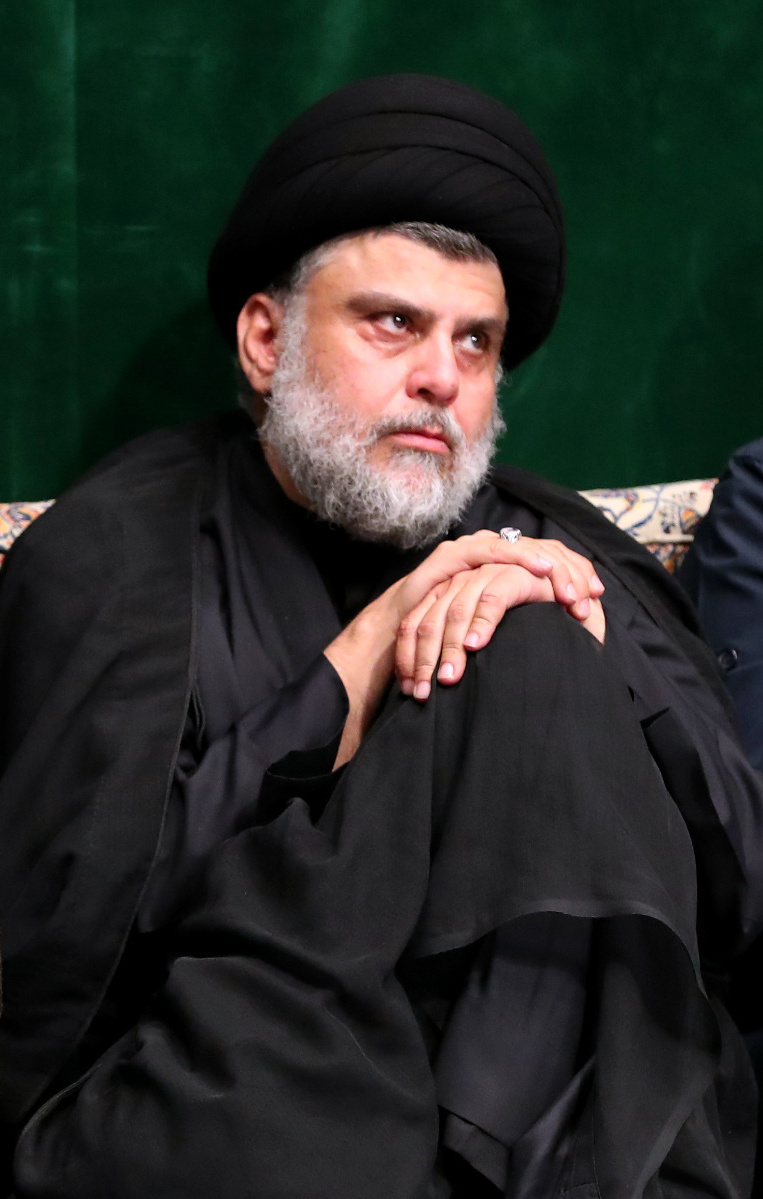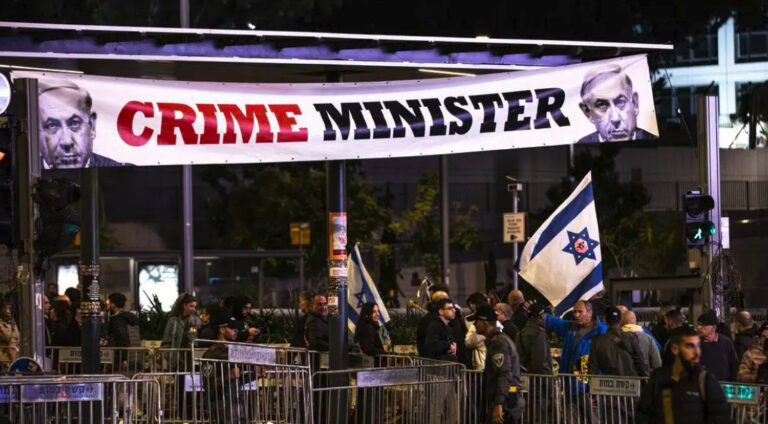
Moqtada al Sadr. Sources : Wikipedia
STRATEGIC ASSESSMENT-Baghdad. As Iraq endures a crippling summer heatwave, a political contest between the popular Shia cleric Moqtada al-Sadr and his Iranian-backed Shia rivals may be coming to a head. On July 27, 2022, as Sadr’s rivals, who lead a bloc called the “Coordination Framework,” appeared close to forming a new Iraqi government, Sadr called on his supporters to protest the move. Subsequently, his followers stormed Iraq’s parliament thereby obstructing a vote to form a Framework-led government. Thousands of Sadrists renewed their protest on July 30, 2022 storming not only the parliament but also the broader government center, located in Baghdad’s Green Zone. On August 5, 2022 Sadr again called for protests, this time after Friday prayers, attracting tens of thousands of demonstrators in a potent “show of force” aimed at Sadr’s rivals. Meanwhile, Iraqi legislation, including major budgetary authorizations that affect much needed public services, remains stalled.
The August 5, 2022demonstrators supported Sadr’s demands that the parliament vote to dissolve itself and schedule a new election. The demands reinforced Sadr’s insistence that his faction’s success in the October 2021 elections should have enabled his bloc to assemble a new government composed of nationalist Shias, Sunni Arabs, and Kurds, excluding pro-Iranian Shia groups. The Framework was able to block Sadr’s government formation efforts and gained the upper hand after Sadr withdrew his party’s 73 members from Iraq’s parliament. Following this withdrawal, however, the Framework was unable to press their numerical advantage and form a new government due to internal squabbles within the coalition. This hesitation afforded the Sadrists time to regroup following their withdrawal from parliament. Sadr’s recent calls for protests were a significant escalation and the demonstrations will eventually lose popular support and momentum as frustrations over government ineffectiveness mount. An acute understanding exists within both camps as to the dangers further escalation may pose; however, if the Coordination Framework refuses to concede to Sadr’s increasingly maximalist demands his non-escalatory options are limited.
The mass demonstrations appeared to compel Sadr’s opponents to consider compromise, including the possibility of bowing to Sadr’s call for new elections. In a statement, the Coordination Framework said it “affirms its support to any constitutional way to resolve the political crises and realize the interests of the people, including early elections.” Their statement also stressed the importance of “not disrupting the functioning” of constitutional institutions – a clear reference to the occupation of parliament by Sadr’s followers. Yet, it is not clear that a new election, if called, would break the political deadlock in Iraq. A new election might conceivably produce results similar to those of the October 2021 vote which resulted in a stalemate.
Iraq’s still nascent democracy stands at a crossroads, with its regional neighbors and the international community keenly aware of the implications of the ongoing power struggle. The accession of a Tehran-aligned government led by the Coordination Framework would likely jeopardize Iraq’s stability by reigniting sectarian tensions between Iraq’s majority Shia community and its Sunni community. Such tensions contributed, in large part, to the rise of Islamic State (IS), which nearly toppled the government in Baghdad and necessitated the return of U.S. forces to Iraq in 2014. The Framework’s choice for Prime Minister is Mohammed Shia al-Sudani, an ally of the divisive former Prime Minister Nuri al-Maliki whose policies during his 2006-2014 prime ministership alienated Iraq’s Sunni Arabs, reinforcing IS’s narrative and expanding its recruitment base. During 2011, Sudani was briefly chairman of the “De-Ba’athification Commission” – which implemented Maliki’s efforts to marginalize many Iraqi Sunnis by barring any person who had links to Saddam Hussein’s ruling Ba’ath Party from government. By contrast, if the Sadrists are able to prevail in a new election and subsequently form a broad-based government, Iraqi stability would likely be enhanced. Yet, even in that scenario, Iran-backed militias that constitute the backbone of the Framework and are supported by Iran’s Islamic Revolutionary Guard Corps (IRGC) may act as spoilers by committing acts of violence against Sadrist politicians or their allies.
The outcome of the power struggle also has significant implications for the two decades-long effort by the United States to reduce Iranian influence in Iraq. Should the Framework prevail in the political contest, its leaders will likely demand that the U.S. withdraw its remaining 2,500 military personnel from Iraq, a longstanding Iranian objective. American forces moved to an advisory role at the end of 2021, and Framework leaders do not perceive a need for continued U.S. help to suppress those IS fighters still operating in Iraqi hinterlands. Sadr, on the other hand, has not indicated an intent to expel U.S. forces from Iraq. He has supported the current Prime Minister, Mustafa al-Kadhimi, who has consistently argued that U.S. advisory help and economic engagement contributes to Iraq’s political stability, prevents IS from reconstituting itself, and facilitates the country’s reintegration into the Arab fold. A Sadr victory therefore appears to better support U.S. strategic interests.
The divisions within Iraq’s Shia Arab community also pose a dilemma for Tehran, which has been careful not to openly support one camp against the other and thereby further divide the Shia community. Coinciding with the large Sadrist demonstration on August 5, the spokesman of Iran’s Foreign Ministry, Nasser Kanani, stated that “Iran looks closely with concern at the situation in Iraq, emphasizing the necessity of maintaining security and stability in the neighboring country.” Still, Iran’s influence in Iraq will clearly benefit if the Coordination Framework is able to form a government in Baghdad. Tehran will likely be careful, however, to promote this result without touching off intra-Shia violence or furthering fragmentation.





